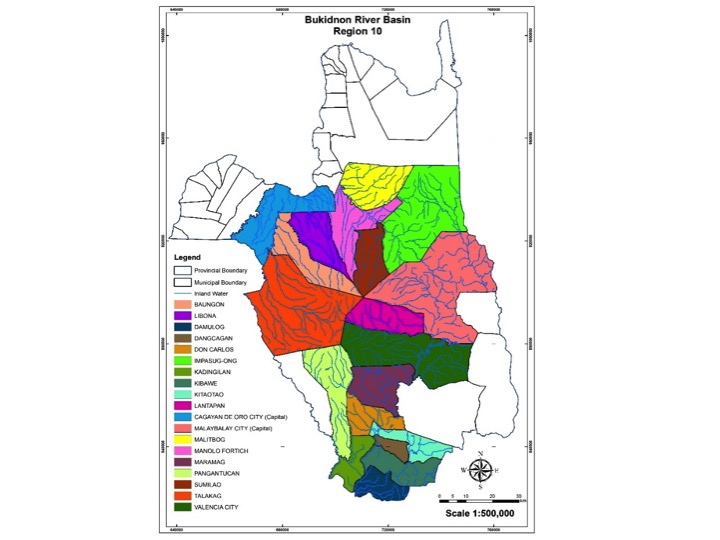 The Upper Bukidnon River Basin and the Lake Lanao Basin feed at least six (6) major rivers of Mindanao including Cagayan River and Rio Grande. Water for irrigating the rice lands of Mindanao also come from these two (2) major river basin.
The Upper Bukidnon River Basin and the Lake Lanao Basin feed at least six (6) major rivers of Mindanao including Cagayan River and Rio Grande. Water for irrigating the rice lands of Mindanao also come from these two (2) major river basin.
Specifically, about 250,000 cubic meters of water per hour is sourced from the Bukidnon river basin to Cagayan, Tagoloan and Pulangi rivers. Bukidnon river basin also support the operation of the Pulangi Hydroelectric Power Plant which supplies 25% of Mindanao’s power needs.
From the four (4) INREMP sites, Bukidnon has the largest area (738,628.00 ha) with ADs partially or wholly covered by the Project.
On conflicting claims for ancestral domain, there are three prominent stakeholders within Mount Kitanglad. Mt. Kitanglad is geopolitically connected to eight municipalities surrounding it, namely: Malaybalay, Lantapan, Talakag, Baungon, Libona, Manolo Fortich, Sumilao, and Impasugong.
The immediate and culturally important stakeholders are the Hiagaonon-Talaandig tribe, who are the indigenous cultural communities collectively referred to as the Bukidnons. The various municipal governments and the dumagats constitute the second set of stakeholders. The DENR represented by its regional units, is the third major stakeholder. Since being declared as a protected area, Mt. Kitanglad is currently managed by the Protected Area Management Board (PAMB) with the DENR and the LGU representatives playing significant roles. Because of the various stakeholders and multiple policies governing Mt. Kitanglad, there emerged two competing models for proposing an ancestral domain claim application in the area. The first model is called the “Unified Claim” with the prominent leaders of theTalaandig-Higaonon tribe as proponents. The second model is “by municipal claim” proposed by the municipal mayors who are members of the PAMB.
Among the issues and concerns are:
o Soil acidity and soil erosion especially in steeply sloping farmlands;
o Kaingin farming for high value crop production;
o Pest infestation;
o Intensive use of chemicals and insecticide in vegetable farming;
o Low potability of water supply;
o Occasional flash flooding;
o Weak enforcement of forestry laws; and
o Conflicting laws particularly against tribal customs and traditions.
